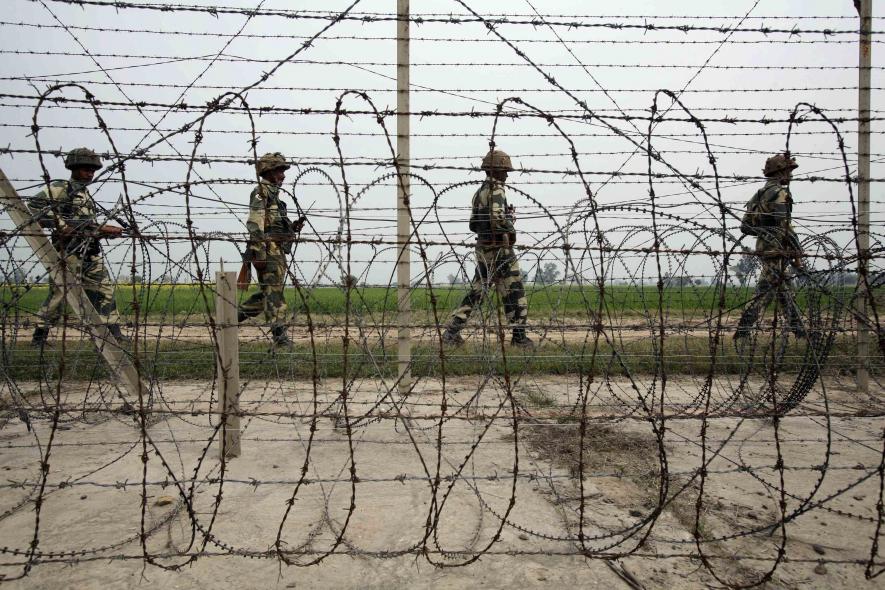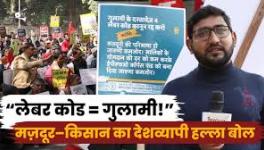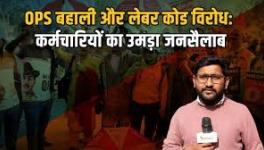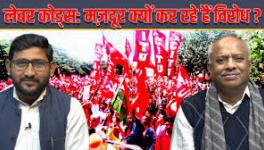Indo-Pak Ceasefire: A Sense of Déjà vu

In last the 30 years, ceasefire, talks with Pakistan and with those espousing ‘azaadi’ have taken place on several occasions leading to nowhere. Yet again, we are where we were once before.
In identical albeit separate statements on May 29 – immediately following the ‘hotline’ conversation between the Director Generals of Military Operation of Indian and Pakistan – it was announced that the two had agreed to “implement the ceasefire understanding of 2003 in letter and spirit forthwith, and to ensure that henceforth the ceasefire will not be violated by both sides”. The promptness with which the two sides held the conversation at 18 hrs IST and the prompt release of statements suggest that the two sides had been talking to each other and had formal approval of the higher authorities to reach agreement and release what must have already been a pre-decided text.
The significance of this agreement can be gauged from the fact that up until now, the Indian Army Chief had been insisting that unless Pakistan agrees to India’s “condition” to ensure that “infiltration comes down”, there is no question of any change. Speaking at Army Chief’s annual press conference in last January, General Bipin Rawat said that the ceasefire violations went up sharply because India is targeting Pakistani Army posts directly, as these posts provide support for infiltrating militants. He insisted that unless Pakistan army “feels the pain, there will be no change”, adding that they have already “three to four times more than us”.
Since 2016 along the entire J&K border with Pakistan, both International Border (Working Border in Pakistani parlance) and the Line of Control (LOC), saw casualties mount and tens of thousands of civilians displaced from their home and hearth on either side, due to incessant firing by both the sides. And therefore the two statements refer to “avoidance of hardships to the civilians along the borders”. India claimed that there were 860 ceasefire violations (CFV) by Pakistan in 2017 and 908 in first five months of this year. Pakistan, on its part, says that India committed 1881 CFVs in 2017 and this year, the CFV count has reached 1050 thus far. According to Pakistan, 87 persons – both civilians and military – were killed in 2017 and in 2018, civilian death toll was 28, while figures for military casualties remain unknown. India claims that Pakistan killed 15 soldiers in 2017 and 11 soldiers in 2018 thus far.
However, in India, every move of the central government regarding Jammu and Kashmir comes with a rider; not to get carried away. There are several reasons for this. Consider how the Ministry of Home Affairs announced the appointment of an “interlocutor” last year with much fanfare who then became a “representative” appointed to only meet elected representatives and disallowed from discussing even “autonomy” which was characterised as anti-national by none other than the prime minister. For all four years of the BJP-led government at the Centre, their line has been consistent: no talking with those who espouse ‘azaadi’ because these were proxies of Pakistan and “terrorists” who needed to be suppressed. It came in handy for Hindutva-laden BJP that predecessor governments mostly spoke of radicalisation of Islam in J&K and kept mum over Hindutva radicalisation in India, and in particular, Jammu. Kathua abduction, rape and murder of a girl child illustrates this coming of age of Hindutva radicals meaning that BJP nurtured it to new heights by slamming everyone as “traitor” who did not toe their line. Indeed, BJP has spoken incessantly that there is no issue to be sorted out in J&K, barring Pakistan to virtually surrender and hand over Kashmir held by them and merge J&K with India.
In other words there is nothing to discuss in J&K if the bottom line is to come for talks by first declaring that they have disowned ‘azaadi’. The immediate concern of BJP government is to bring down CFVs because civilian population in Jammu has been affected badly by CFVs and realized that BJP’s promise of muscular response to Pakistan has inflicted havoc on them, and have turned bitter towards BJP. The scale of the problem can be gathered from the fact that Ministry of Home Affairs recently approved allocation of Rs 415 crore for constructing 13,000 individual bunkers and 1431 community bunkers in Kathua, Samba, Jammu, Rajouri and Poonch districts. This is to prevent their forced migration as has happened now when nearly 100,000 civilians vacated their villages causing much misery.
Since this agreement on halting CFV has come in the wake of conditional ‘non initiation of combat operations’ in Jammu and Kashmir, it sends a message that ice is melting between the two countries, and that there are improved prospects of dialogue ensuing between India and Pakistan and between India and Kashmir’s so called separatist leaders. But the point is: can the two separate talks take place simultaneously when compared to talks between two countries where there is an agenda for talks, those who espouse azaadi are considered criminals who support terrorists and when BJP all but regards them as non-entities? If there has been a change in BJP’s thinking, there is no evidence to suggest that. The point is that by now, it should be clear that Indo-Pakistan talks have little meaning for J&K unless those who question ‘union’ with India are acknowledged as legitimate partners, and fetters removed from them and other civilians, to freely express themselves and encouraged to join talks.
Remarkably, the link between Pakistan and militancy in Kashmir is tenuous and infiltration is not as big an issue as it’s made out because it is the indigenous militancy dependent on local recruitment, which relies on its own resources and enjoys popular support that poses a challenge to the Indian government.
A report prepared by J&K police and accessed by Muzamil Jaleel of The Indian Express [“Encounters Fuel Militant hiring, says official report”, May 30, 2018] shows that between January and June 2016, there were 94 militants operating in J&K. The dastardly killing of Burhan Muzaffar Wani on July 8 saw a spurt and number of active militants rose to 113 in 2017 and in 2018, thus far, it has risen to 149. In 2016, 33 militants were killed and 88 joined the militant ranks. In 2017, number of local militants killed rose to 80 while 131 joined militancy. It is the local militants and the thousands of civilians who rush to encounter sites which, therefore, pose the biggest challenge to the Government of India. The commitment displayed by local militants has startled the Indian security agencies and forces in J&K. In other words, Pakistan does not cause locals to join militancy. That job is being well served by the Indian armed forces, Hindutva forces and the Indian corporate media with their rhetoric and shrill propaganda. In other words, unless truth about the actual situation is acknowledged, while fakery, bravado and chest thumping discarded, prospects for resolution of the dispute are rather slim. That being said, if both the ceasefires hold, it is good news for civilians because, even if temporarily, the cycle of violence halts, providing respite.
The temporary nature of cessation of hostilities is also because there is no clarity over dialogue, when ruling BJP leaders contradict each other. Rajnath Singh spoke of being ready for talks, while Sushma Swaraj wanted “terror to stop” from Pakistan’s side before talks could be held. And Amit Shah took the line that “stone pelting” must cease for talks to be considered. The May 19 visit of PM Modi to Srinagar found him again stick to his pet theme of “development” chant, making it clear that onus was on Kashmiris to maintain peace for “development”. With obtuse understanding of Kashmir Dispute, indifference to the facts on the ground as well as the long history of people’s struggle to be heard and taken seriously, there is little prospect of dialogue.
Indeed, forget dialogue, consider the slow pace of disbursal of “development” package of Rs 80,068 crore announced in 2015 by the PM. That is a year after the disastrous floods of 2014, when the central government sat on extending relief to flood victims. Standing Committee of Parliament on Home Affairs found that in three years, only Rs 17,913 crore or 22 per cent of funds have been released, although projects cleared were Rs 52,000 crore. PM’s package provided Rs 42, 611 crore for roads and highways; Rs 11,708 crore for power and renewable energy; Rs 5263 crore for security and welfare of displaced people; Rs 7854 crore for flood relief including reconstruction and flood management; Rs 4900 crore for health (two AIIMS and infrastructure for Public Health Centers) Rs 2312 crore for Tourism, and Rs 529 crore for agriculture and food processing. It is apparent that even government’s own measures have more of propaganda value than otherwise and are not meant to be taken seriously.
The point is that when the BJP government remains lethargic, where its own economic “package” is concerned, then to expect that this very dispensation would be serious about resolving the intractable dispute would be an erroneous conclusion. What instead is happening appears to be driven by compulsion of showing something positive after four years of bigotry and jingoism and as the country moves closer to general elections of 2019. Finally, from not having any clarity over talks, or even what to talk about when constitutionally guaranteed autonomy has been hollowed out and only “shell remains”, and the very mention of self-determination is considered taboo by Indian authorities, then what would the Kashmiris discuss with the Government of India? Why, indeed, should they enter such vacuous talks? In other words, we have seen such moment before, which fizzled out for woeful lack of sincere and serious approach by India’s rulers.
Get the latest reports & analysis with people's perspective on Protests, movements & deep analytical videos, discussions of the current affairs in your Telegram app. Subscribe to NewsClick's Telegram channel & get Real-Time updates on stories, as they get published on our website.














